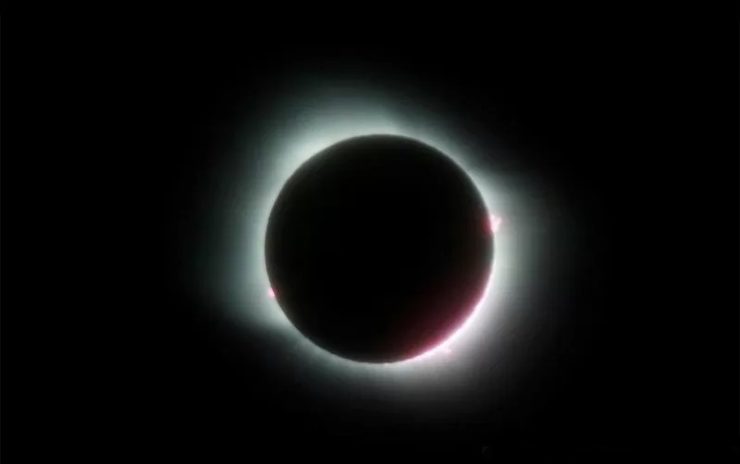THE total lunar eclipse or better known as the “super blood moon” will occur on May 26, its phases will be visible in a number of regions in various parts of the world, including Indonesia. This phenomenon is often called the super blood moon, because the moon will line up closest to the earth, an event that some people call a supermoon.
“You can literally see the solar system at work, and Newton’s laws of gravity at work in front of your own eyes,” said Edwin Krupp, director of the Griffith Observatory in Los Angeles, quoted by the New York Times, Wednesday (26/5).
Where and when can a total lunar eclipse be seen?
This phenomenon will be seen mainly from Australia, East Asia, the islands of the Pacific, and West America. People on the West Coast of the United States, from Southern California to Washington State, can see it starting around 1.47 a.m. Pacific time on May 26.
In Indonesia, the peak of the eclipse occurred at 18.18.43 WIB or 19.43.18 WITA or 20.43.18 WIT with a distance of 357,464 kilometers from the earth.
At first the moon will only enter the outer shadow of the earth called the penumbra. Any changes to the lunar surface will be subtle at first, Dr. Krupp.
Over the next few hours, the moon will move deeper into the shadow, where it will look as if something is biting it. During this phase, the color will start to turn reddish. It will start at around 2.45am Pacific time.
At 4:11 AM Pacific Time, the moon will fall completely in the shadow of the Earth’s inner umbrella and will be completely a deep crimson red.
The peculiarity of the lunar orbit suggests that this total eclipse will be relatively short, lasting about 14 minutes and ending at 4.25 am Pacific time. Some total lunar eclipses last for nearly an hour.
What happens during the lunar eclipse?
A lunar eclipse occurs when our planet is between the sun and moon. “Moonglow” is actually a reflection of sunlight so that the surface of the moon gradually darkens as the moon falls into the long shadow of the Earth.
Sometimes, the movement of the lunar sky causes it to only touch part of the Earth’s shadow, causing partial lunar eclipses, which are often difficult to see. But on this night’s eclipse the moon will be completely obstructed by most of the Earth.
During such an event, a small amount of sunlight is lensed around the edges of the earth. Earth’s atmosphere filters out everything except the longer, redder wavelengths that are projected onto the moon. Copper light – a combination of all the world’s sunrises and sunsets – creates a deep red color on the moon during a total eclipse.
“It was a truly magnificent spectacle,” said Madhulika Guhathakurta, an astrophysicist at NASA’s Goddard Space Flight Center in Greenbelt, Md.
Why is this also a supermoon?
The moon’s orbit is not a perfect circle around the earth, but an ellipse, so sometimes it gets closer and farther from our planet.
The supermoon this time is supposed to make the moon appear about seven percent bigger and brighter than usual, although most people will have a hard time telling the difference. When the moon is near the horizon, it tends to appear very large, a well-known optical illusion that so far cannot be fully explained.
Some people hear about supermoons, witness these effects, and believe they have seen something special. But the two are not related, says Dr. Krupp.
A supermoon marching with a lunar eclipse is nothing unusual. The latest super blood moon occurs on January 21, 2019, and the next one is May 16, 2022.
The fact that the headlines focus on making cute names like “super flower blood moon” for this lunar eclipse “is truly a product of the internet age,” said Dr. Krupp.
What science takes place during an eclipse?
Research during a lunar eclipse has a long pedigree. Aristotle demonstrated that the earth is a sphere by showing that it always produces a round image on the moon, no matter where the eclipse is on or where the moon is in the sky. Only round objects, he argued, could produce circular shadows from every angle.
In modern times, NASA has used instruments on the Lunar Reconnaissance Orbiter, a robotic spacecraft orbiting the moon, to measure the temperature of the moon’s surface as it passes through Earth’s shadow. By observing how quickly different rocks cool, scientists can deduce their density, says Dr. Guhathakurta.
He is pleased that people around the world are paying more attention to astronomical phenomena such as eclipses. [antaranews/photo special]
















